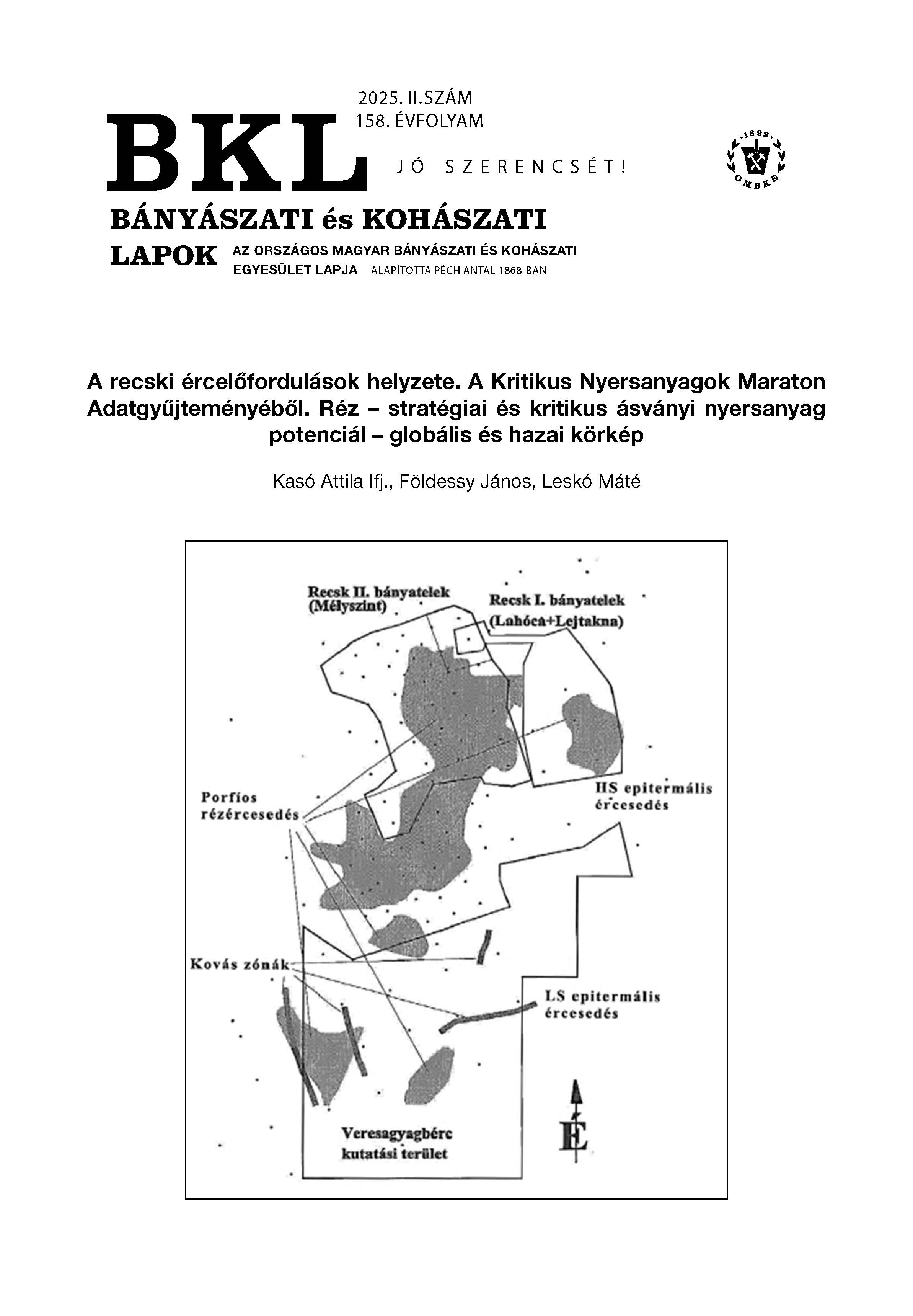The utilization of the precious and non-ferrous metal content of waste automotive connectors by mechanical pre-treatment and a subsequent pyrometallurgical method
Abstract
The waste of connectors used for electrical conduction in the automotive industry can be valuable secondary raw materials, as they contain significant concentrations of gold and copper. However, before metal recovery, it is first necessary to mechanically separate the gold-containing contact pins from non-metallic components, thus creating a metal concentrate rich in gold and copper. In this article, we examined the effectiveness of two methods. In the first case, the connectors were first shredded in a hammer shredder, and then magnetic separation was used to separate 97.02% of the gold and 76.16% of the copper into the magnetic product. In the second method, the connectors, which had undergone thermochemical treatment, were pre-shredded in a jaw crusher, ground further in a ball mill, and then classified by sieving. The material above 1 mm constituted the metal concentrate, which contained 99.4% of the gold content in the connectors. The pyrometallurgical utilization of the metal-rich fraction above 1 mm was investigated by metal-dissolving melting using molten copper as the solvent. Under optimal conditions, 99.1% of the gold content of the metal concentrate dissolved into the molten copper, resulting in a gold concentration of 0.26 g/kg in the alloy.
References
M. Bigum, L. Brogaard, T. H. Cristensen: Metal recovery from high-grade WEEE : A life cycle assessment. Journal of Hazardous Materials, 207–208 (2012) 8–14. https://doi.org/10.1016/j.jhazmat.2011.10.001
M. D. Rao, K. K. Singh, C. A. Morrison, J. B. Love: Challenges and opportunities in the recovery of gold from electronic waste. RSC Adv., Issue 8 (2020) 4300–4309. https://doi.org/10.1039/C9RA07607G
H. Kumar, S. Kumagai, Y. Saito, T. Yoshioka: Latest trends and challenges in PVC and copper recovery technologies for End-of-Life thin cables. Waste Management, 174 (2024) 400-410. https://doi.org/10.1016/j.wasman.2023.12.012
J. P. Sykes, S. Ulrich, M. Kanakis, D. I. Groves, S. Hagemann, A. Trench: Is grade king in gold? A preliminary analysis of gold productsion cost at Australian and New Zeland mines.In: AusIMM New Zealand Branch Conference, 2016. https://doi.org/10.13140/RG.2.2.34082.43200
M. D. Adams: Overview of the gold mining industry and major gold deposits. In: Gold Ore Processing, New York, Elsevier, 2016, pp. 25–30. https://doi.org/10.1016/B978-0-444-63658-4.00002-5
G. Calvo, G. Mudd, A. Valero, A. Valero: Decreasing ore grades in golbal metallic mining: A theoritical issue or a global reality. Resources, 5/4 (2016) 36. https://doi.org/10.3390/resources5040036
Resources and technology: World copper resources. https://www.princeton.edu/~ota/disk2/1988/8808/880807.PDF
A. Cesaro, A. Marra, K. Kuchta, V. Belgiorno, E. D. van Hullebusch: WEEE management in a circular economy perspective: An overview. Global NEST Journal, 20/4, (2018) 743–750. https://doi.org/10.30955/gnj.002623
M. S. Sodhi, B. Reimer: Models for recycling Electronics end-of-life products. QR Spectrum, 23/1, (2001) 97–115. https://doi.org/10.1007/PL00013347
C. Hagelüken, C. Corti: Recycling of gold from electronics: Cost-effective use through ‘Design for Recycling’. Gold Bulletin, 43/3 (2010) 209–220. https://doi.org/10.1007/BF03214988
M. Takano, S. Asano, M. Goto: Recovery of nickel, cobalt and rare-earth elements from spent nickel–metal-hydride battery: Laboratory tests and pilot trials. Hydrometallurgy, 209/1 (2022) 105826. https://doi.org/10.1016/j.hydromet.2022.105826
London Metal Exchange: http://www.lme.com
Goldprice: http://www.goldprice.org.
F. Ottó: Nyersvas-metallurgia, Budapest: Tankönyvkiadó, 1989.
S. László: Elektroacél-gyártás. Budapest: Magyar Vas- és Acélipari Egyesülés, 1990.
M. E. Schlesinger, K. C. Sole, W. G. Davenport, G. R. F. Alvear Flores: Extractive Metallurgy of Copper. New York: Elsevier, 2011. ISBN: 9780128219034



